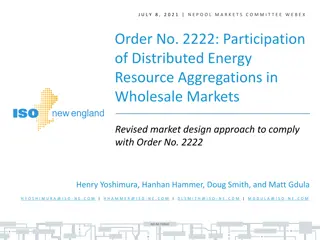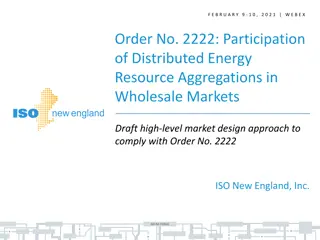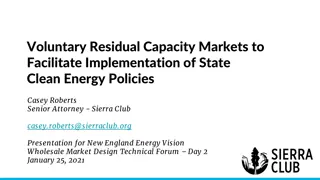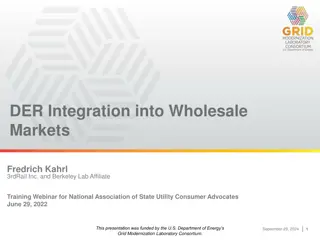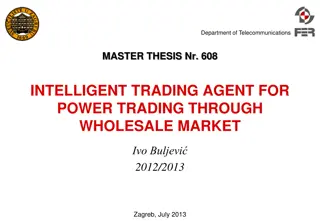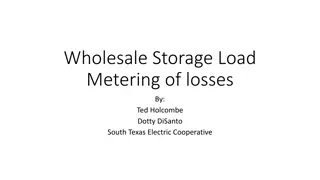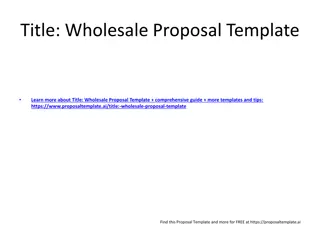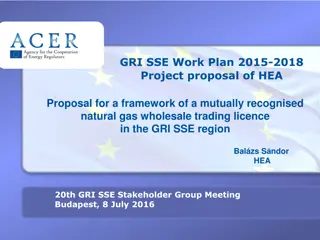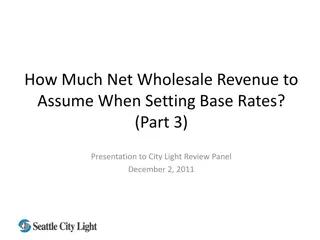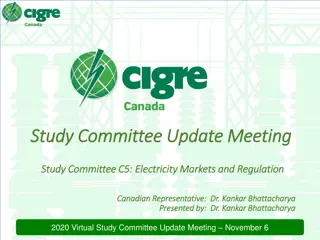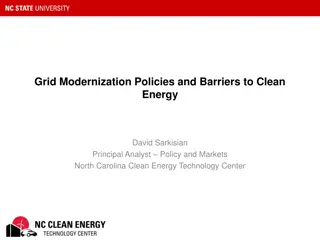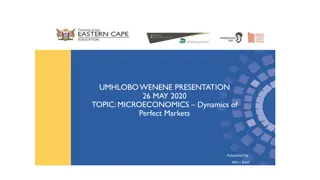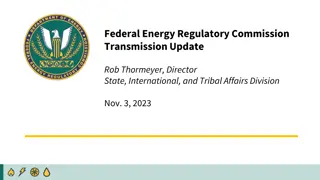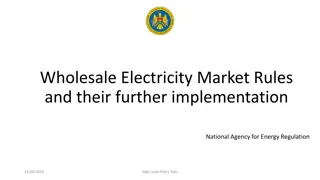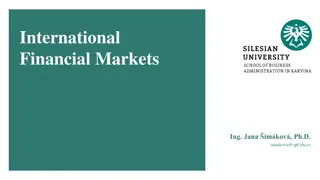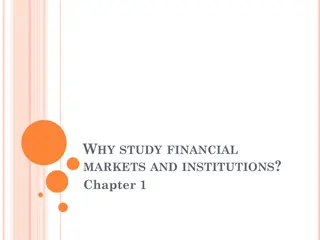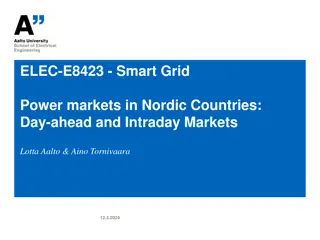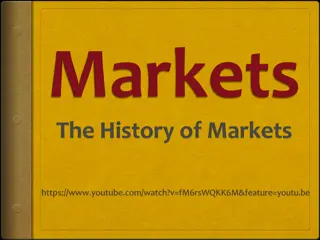Wholesale Energy Markets Design Overview
Wholesale energy markets in the U.S. are diverse, ranging from traditional bundled models to restructured and hybrid markets. The evolution is driven by state policy choices, with variations in market structures and regulatory frameworks impacting resource adequacy and generation operations. Understanding these different market types is crucial for navigating the complex energy landscape.
Download Presentation

Please find below an Image/Link to download the presentation.
The content on the website is provided AS IS for your information and personal use only. It may not be sold, licensed, or shared on other websites without obtaining consent from the author. Download presentation by click this link. If you encounter any issues during the download, it is possible that the publisher has removed the file from their server.
E N D
Presentation Transcript
The Market Identity Crisis Tony Clark, Sr. Advisor, WBK Law New England Energy Vision Wholesale Markets Design Technical Forum January 25, 2021
Wholesale Markets Driven by State Policy Choices Traditional Most of the West Most of the Southeast Restructured Texas Most of New England and Mid-Atlantic Hybrid Most of Midwest and Plains California
Traditional Markets Bundled Generation/Transmission/Distribution Utilities schedule their own balancing areas/service territories No organized wholesale market or independent grid operator Wholesale sales of energy completed through bi-lateral agreements COS regulation the dominant form of regulation New wholesale market overlays emerging (EIM, EIS & SEEM) Resource Adequacy responsibility is clear
Restructured Markets Unbundled Generation/Transmission/Distribution with the distribution wires portion of the business still regulated as a monopoly service Generation is a merchant business, dependent on organized wholesale markets to send price signals Wholesale energy markets designed around lowest marginal cost dispatch Resource adequacy determined by market Two main variations: Energy-only restructured markets (Texas) Depends on volatility to draw in new resources Energy + Capacity Markets (ISO-NE; NYISO; PJM) Depends on a combination of revenue from both markets to procure adequate resources
Hybrid Maintain vertically integrated utilities; but generation dispatch and operation of transmission grid is accomplished through an RTO RTOs stitches together transmission plans in a bottom-up process, based on individual actions taking place in the states Resource adequacy a shared responsibility but states maintain clear authority over capacity procurement decisions Two Main Variations MISO & SPP: no retail choice (except IL), generation owned by incumbents CAISO: no retail choice, most generation not owned by incumbents
Crisis in the Restructured States (especially) A number of states especially the restructured ones are saying, the markets are broken (i.e. the markets aren t procuring the resources we prefer ) In response to markets not procuring resources that satisfy state public policy goals, states have been exploring ways to get around the markets 7
State Around Market ActionsEvaluating approaches to Clean Power Plan compliance: Mass-based, Rate-based and State Measures approaches 8
Around Market Actions in the Courts Around market actions undefeated as courts begin to interpret Hughes Second Circuit upheld CT renewable procurement program; SDNY upheld NY ZECs; ND IL upheld FEJB SDNY broadly interprets Hughesto permit any actions independent of the auction 7th Circuit Court of Appeals, Upheld Illinois Future Energy Jobs Bill litigation 9
The Challenge for Restructured States Restructuring was designed to shift resource decisions to a market-like mechanism, and to shift risk from customers to shareholders States picking and choosing resources begins to look a lot like old fashioned Integrated Resources Planning, but it leaves true merchant operators in difficult spot (the only way to compete is to get your own subsidy) 10
FERC Responds to State Actions June 2018, FERC finds PJM capacity market design unjust/unreasonable December 2019 FERC Releases an order expanding the Minimum Offer Price Rule in the PJM region An expanded MOPR will, theoretically, raise capacity prices by attempting to negate the impact of state subsidies but does so with the risk of over-procuring resources and working against a legitimate exercise of state authority States enacting policies that undercut the operation of federally jurisdictional wholesale markets and FERC responding by undercutting legitimate state public policy goals seems like a no-win policy cycle 11
Key Questions Traditional Restructured Hybrid: Is there a 4th lane? Restructured but with substantially stronger state guidance in choosing preferred resources Or are we basically left with the models we have? If states wish to engage in resource planning, is it possible to put the toothpaste (at least partially) back in the tube? How will resource adequacy be addressed? Avoid the California Trap: incoherent mix of public policies and regulatory structures where no entity has clear responsibility to ensure resource adequacy
Contact Tony Clark Senior Advisor Wilkinson Barker Knauer, LLP Email: tclark@wbklaw.com 13


